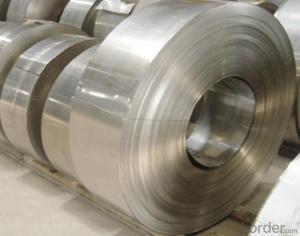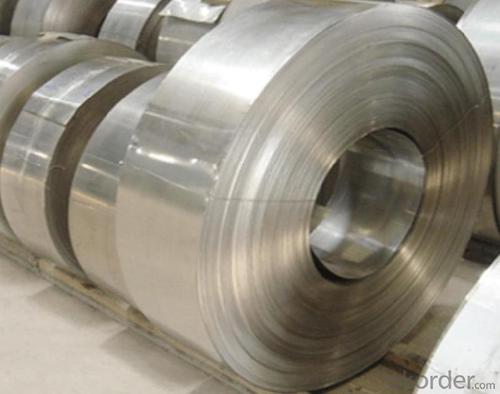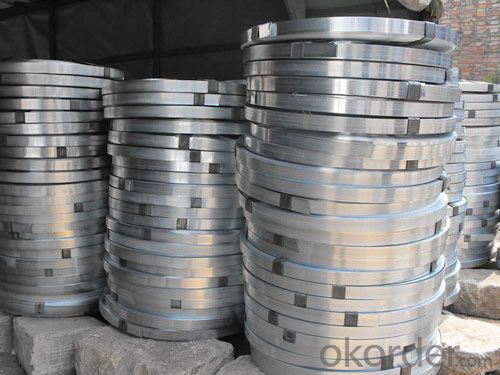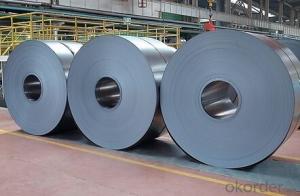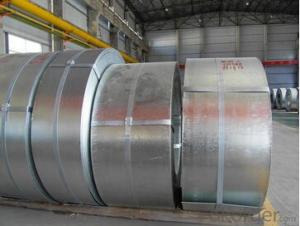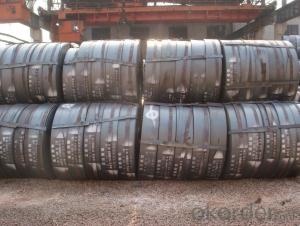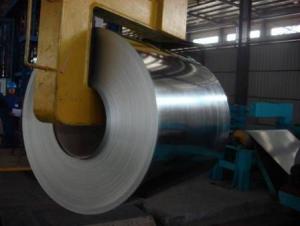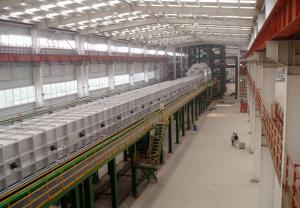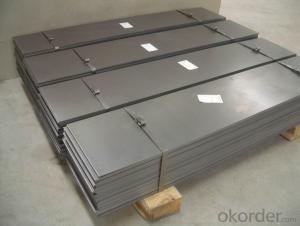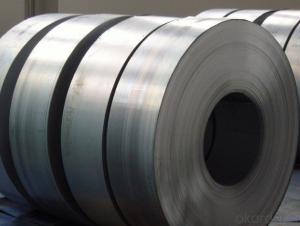Hot Galvanized Steel Strip
- Loading Port:
- China Main Port
- Payment Terms:
- TT OR LC
- Min Order Qty:
- -
- Supply Capability:
- -
OKorder Service Pledge
Quality Product, Order Online Tracking, Timely Delivery
OKorder Financial Service
Credit Rating, Credit Services, Credit Purchasing
You Might Also Like
Specifications
Hot & Cold rolled galvanized steel strip with excellent quality and various thickness
HOT GALVANIZED STEEL STRIP
Materail: Q195 steel sheet.
Processing technique: Hot & electric rolled galvaznized
| adopt wide hot galvanized strip produced by famous company as Bao Steel which has even thickness |
| we introduce a new complete set of cutting technology |
| keep steady precision |
| reduce waste of material farthest |
| adopt physical technique in order to make the galvanized level thicker |
| enhance the rustproof capability |
| adopt non-chrome passivation technique |
| protect the environment against pollution |
| adopt level pressure technique and inert gases protect technique |
| make the galvanized level brighter |
| delay oxidation phenomenon in natural environment |
- Q: What industries use steel strips?
- Several industries use steel strips, including automotive manufacturing, construction, aerospace, electronics, machinery, and packaging. Steel strips are commonly used for various applications such as making automobile components, building structures, manufacturing aircraft parts, producing electrical appliances, constructing machinery, and packaging goods.
- Q: What are the alternatives to steel strips for specific applications?
- There are several alternatives to steel strips for specific applications, depending on the specific requirements and characteristics needed for the application. Some of the alternatives include: 1. Aluminum Strips: Aluminum strips are lightweight, corrosion-resistant, and have good conductivity. They are commonly used in applications where weight is a concern, such as aerospace and automotive industries. 2. Copper Strips: Copper strips are known for their excellent electrical conductivity and high thermal conductivity. They are commonly used in electrical and electronics industries, where efficient electrical or heat transfer is required. 3. Plastic Strips: Plastic strips, such as PVC or polypropylene, are lightweight, cost-effective, and offer excellent corrosion resistance. They are often used in applications where non-conductivity, flexibility, or chemical resistance is important, such as in packaging, construction, or medical industries. 4. Fiberglass Strips: Fiberglass strips are lightweight, durable, and offer high tensile strength. They are commonly used in applications that require high strength combined with corrosion resistance, such as in marine, automotive, or construction industries. 5. Carbon Fiber Strips: Carbon fiber strips are lightweight, high-strength alternatives to steel. They offer excellent tensile strength and are commonly used in applications that require strength combined with low weight, such as in aerospace, sporting goods, or automotive industries. 6. Titanium Strips: Titanium strips are lightweight, corrosion-resistant, and possess high strength-to-weight ratio. They are commonly used in applications that require high strength, corrosion resistance, and low weight, such as in aerospace, marine, or medical industries. 7. Composite Strips: Composite strips, made from a combination of materials such as fiberglass, carbon fiber, or aramid fibers, offer a combination of different properties. They are used in applications that require specific characteristics, such as high strength, low weight, or specific thermal or electrical properties. It is important to carefully consider the specific requirements and characteristics needed for the application before selecting an alternative to steel strips. Each alternative material has its own advantages and limitations, and the choice will depend on factors such as cost, weight, strength, corrosion resistance, and other specific needs of the application.
- Q: Are steel strips used in the construction industry?
- Yes, steel strips are commonly used in the construction industry. They are often used as structural reinforcements, such as in beams, columns, and foundations, to provide strength and durability to the structures. Steel strips are also utilized in various applications like roofing, cladding, and framing due to their high tensile strength, corrosion resistance, and versatility.
- Q: How are steel strips heat-treated for improved properties?
- Steel strips have the potential to undergo heat treatment processes, which can enhance their properties. The most commonly employed techniques for heat treating steel strips include annealing, quenching, and tempering. Annealing involves heating the steel strips to a specific temperature and subsequently slowly cooling them. This procedure aids in relieving internal stresses, enhancing ductility, and refining the grain structure of the steel. By heating the steel to a temperature below its critical point, the atoms within the steel rearrange themselves, resulting in a more uniform and softer material. Annealing also improves machinability and reduces hardness, thereby facilitating easier workability of the steel strips. Quenching, another crucial heat treatment process for steel strips, entails rapidly cooling the strips by immersing them in a quenching medium, such as water, oil, or air. This rapid cooling prevents the formation of large grains and promotes the development of a harder and stronger material. Quenching significantly augments the hardness, strength, and wear resistance of the steel strips. However, this process may also lead to increased brittleness, which is why it is often followed by tempering. Tempering serves as the final step in the heat treatment process and aims to alleviate the brittleness caused by quenching. During tempering, the steel strips are reheated to a specific temperature and gradually cooled. This procedure helps to relieve internal stresses and enhance toughness in the steel. Tempering also improves the steel's resistance to cracking and enhances its overall mechanical properties. The precise temperature and duration of tempering depend on the desired properties of the steel strips. In conclusion, heat treatment processes, including annealing, quenching, and tempering, play a vital role in enhancing the properties of steel strips. These processes enhance the strength, hardness, toughness, and machinability of the steel, making it suitable for a wide range of applications in industries such as automotive, construction, and manufacturing.
- Q: Can steel strips be used in the construction of railways?
- Yes, steel strips can be used in the construction of railways. Steel strips, commonly known as steel rails, are widely used in railway tracks due to their high strength, durability, and ability to handle heavy loads. They provide a stable and smooth surface for trains to travel on, ensuring safe and efficient transportation. Additionally, steel strips can withstand various weather conditions and require minimal maintenance, making them an ideal choice for railway construction.
- Q: How are steel strips used in the production of storage tanks?
- Steel strips are an integral component in the production of storage tanks. These strips are typically used to construct the outer shell or walls of the tank, providing strength and durability to withstand the pressure and weight of the stored materials. The steel strips used for storage tanks are often made from high-quality carbon steel or stainless steel, which have excellent corrosion resistance properties. This is crucial as storage tanks are often exposed to various harsh environments and substances, such as chemicals, acids, or even water. The use of steel strips ensures that the tanks remain stable and secure, protecting the contents and preventing leakage or contamination. In the production process, the steel strips are cut and shaped into the desired dimensions and then welded or sealed together to form the tank's cylindrical or rectangular structure. This welding process is critical to ensure the structural integrity and leak-proof nature of the tank. Moreover, steel strips also play a significant role in reinforcing the tank's walls to withstand the internal pressure exerted by the stored materials. Storage tanks are often used to contain liquids or gases under high pressure, and the steel strips provide the necessary strength to withstand these forces. Additionally, the steel strips can be further reinforced with ribs, flanges, or other structural features to increase their load-bearing capacity. Overall, steel strips are crucial in the production of storage tanks as they provide the necessary strength, durability, corrosion resistance, and structural integrity required for the safe storage of various substances.
- Q: What is the weight of a typical steel strip?
- The weight of a steel strip can differ based on its dimensions, thickness, and composition. Steel strips can weigh anywhere from a few ounces to several tons. To accurately determine the weight, it is crucial to have specific details about the strip, including its length, width, and thickness. The type of steel, whether it's carbon steel or stainless steel, can also impact the weight. Therefore, without precise information about the steel strip, it is challenging to give an exact weight.
- Q: Can steel strips be cold-formed or bent?
- Yes, steel strips can be cold-formed or bent.
- Q: What are the different methods for stamping steel strips?
- Stamping steel strips can be done using various methods, each with its own advantages and applications. Let's explore a few of these methods: 1. Progressive Die Stamping: To create the final product, progressive die stamping employs a series of individual dies that perform specific operations on the steel strip as it moves through the machine. This method is highly efficient and can produce large quantities of parts in a short time. 2. Transfer Die Stamping: Similar to progressive die stamping, transfer die stamping also utilizes multiple dies. However, in this approach, the strip is transferred from one die station to another during the process. This enables the stamping of more complex shapes and larger parts. Transfer die stamping is often used for parts with intricate designs or requiring multiple operations. 3. Tandem Line Stamping: Tandem line stamping involves multiple presses operating synchronously to stamp different features or perform various operations at the same time. This method is suitable for larger parts or when a single press cannot complete the required operations. Tandem line stamping improves efficiency and reduces cycle time. 4. Deep Draw Stamping: Deep draw stamping is employed to shape cylindrical or box-like parts from steel strips. This method involves pulling the strip into a die cavity using a punch, resulting in a deep draw shape. It is commonly used for manufacturing items like cans, cups, and containers. 5. High-Speed Stamping: High-speed stamping employs specialized presses and tooling to achieve rapid production rates. This method is ideal for industries requiring high-volume production and is known for its efficiency and precision. It finds applications in automotive, electronics, and appliance industries. 6. Compound Die Stamping: Compound die stamping combines multiple operations into a single die. This method is suitable for parts with simpler designs and requires fewer press strokes to complete the stamping process. It is cost-effective for low to medium volume production runs. In conclusion, the selection of a stamping method depends on factors such as part complexity, required volume, production speed, and cost considerations. Manufacturers carefully analyze these factors to determine the most suitable method for stamping steel strips.
- Q: Are steel strips suitable for stamping or forming operations?
- Yes, steel strips are suitable for stamping or forming operations. Steel strips have excellent strength, flexibility, and durability, making them ideal for various stamping or forming processes. They can be easily shaped, bent, and manipulated to create intricate designs and precise shapes. Additionally, steel strips offer high resistance to corrosion and heat, further enhancing their suitability for stamping or forming operations.
Send your message to us
Hot Galvanized Steel Strip
- Loading Port:
- China Main Port
- Payment Terms:
- TT OR LC
- Min Order Qty:
- -
- Supply Capability:
- -
OKorder Service Pledge
Quality Product, Order Online Tracking, Timely Delivery
OKorder Financial Service
Credit Rating, Credit Services, Credit Purchasing
Similar products
Hot products
Hot Searches
Related keywords
